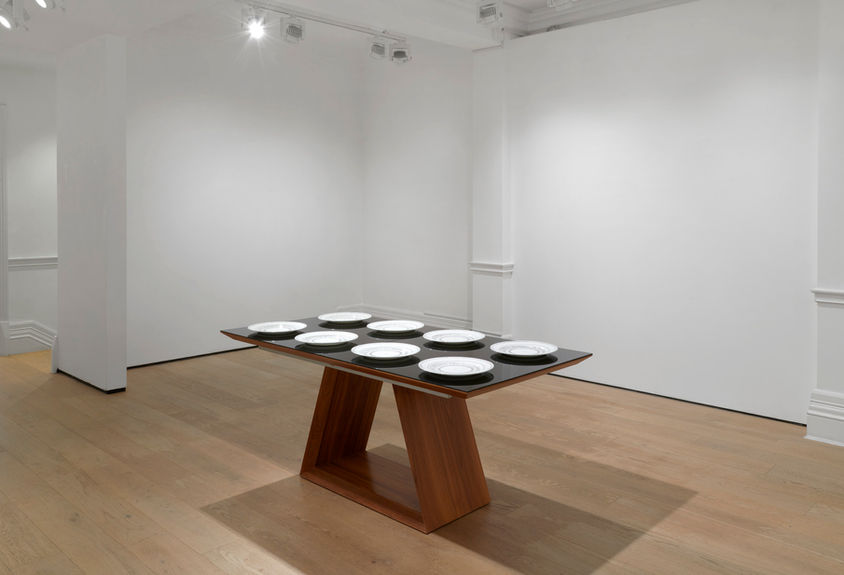Wilma
Woolf
Domestic
Domestic is an Installation documenting all the women that have been killed in the UK at the hands of male violence since 2013. Eight individual plates are placed on a table, representing eight years of data. On each plate is the year, the woman’s name, her relationship to the person that killed her or her children, and how that woman died. Specifically designed icons create a visual language to communicate the precise cause of death.
The plates are laid on an obsidian black glass table. The glass is so dark that it acts as a mirror to the viewer peering over the table to the plates laid out. It is to reflect that domestic violence is both ageless and classless and can and does affect everyone.
The aim of this piece of work is dualistic. It is to remember the women who have needlessly lost their lives and also, to highlight the institutionalised and systemic acceptance of this human rights abuse often regarded as an inevitable part of men and women co-existing. This piece of work allows us all to visualize and understand this crime as one continuous crime, not a series of inevitable, unstoppable incidents.
There are a plethora of policy responses that could be enacted to help combat this crime. Funding for mental health support, sustained funding for safe houses, improved responses from police and associated agencies to protect women when they report this crime are a handful of examples. The Femicide census, published in 2020 stated: "there is little suggestion that any intervention over the past ten years has had a significant impact or even any impact at all on the number of women being killed by men." This is an unacceptable failure when we consider the devastating impact this violence has, compounded by the fact that we do know, through research, what policies can help combat and prevent this crime. For further information on detailed policy responses to combat men's violence against women, please see Section 8 of the femicide census.
The artists research for this installation is based initially on data collected by the Counting Dead Women project, and then cross referenced with the femicide census, media reports on local and national news reports.








